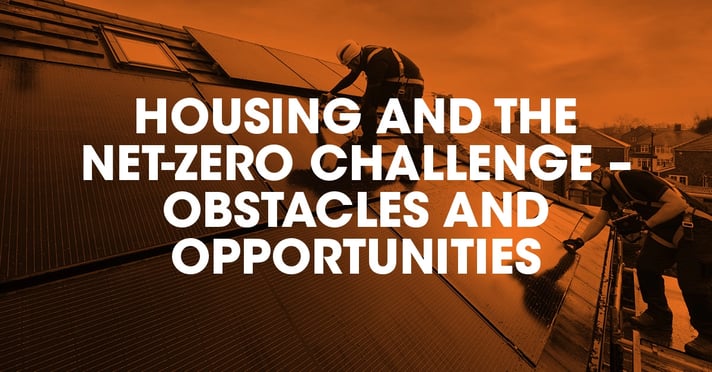Confidence to hit EPC targets
While there isn’t a clear legal mandate or pathway for social landlords to reach net-zero emissions, an interim goal is for the sector to reach a minimum “C” EPC rating for their properties.
One fifth of those polled said they were doubtful they’d be able to reach that target by 2030.
By contrast, nearly half of respondents, 47%, said they either “confident” or “very confident” they could hit those targets.
Squaring up to net-zero
While the details of how social landlords will be asked to hit net-zero are yet to be laid out in concrete plans, some are racing ahead. More than a third of social housing landlords have published a net-zero plan.
In addition, some social landlords are making procurement decisions with net-zero in mind.
One fifth of those polled indicated they prefer suppliers that have a published net-zero plan, and a further quarter indicated they consider net-zero strategies, but don’t require them from all suppliers (such as their structural warranty supplier).
To drive the point home further, 18% of respondents said they prefer suppliers with a net-zero plan and will eventually mandate that all suppliers have one as well.
On the other hand, a significant minority (more than 36%) indicated that they have no interest in supplier net-zero plans and don’t considering them during procurement.
While the majority of social landlords have some plan or consideration to demand net-zero strategies from their supply chain, a significant group aren’t thinking about it at all. It will be interesting to gather information on whether open-market builders are thinking about similar requirements.
The technology, today and tomorrow
Of the technology that social landlords are currently using, solar panels race ahead as the clear favourite, with nearly 70% of those polled saying they’re currently using them.
For heating, air-source heat pumps are by the far most-adopted alternative heating technology, with just 3% using some kind of hydrogen system.
However, looking at technology they plan to adopt soon, hydrogen’s prospects look up. Well over a quarter of polled landlords say they hope to adopt hydrogen soon, alongside over a quarter saying they’d like to introduce ground-source heat pumps.
With 70% of respondents indicating that they already use solar panels, and 19% saying they’d like to use them in the next five years, we might be able to speculate that only 10% of the social landlord sector have no plans to use them at all.
What’s standing in their way
When it came to what stands in the way of social landlords adopting greener technology in their builds, cost came out clear at the top.
72% of respondents said that cost was the biggest obstacle in their way hitting their net-zero targets.
Alongside cost, a lack of specialists and a lack of government funding were cited as difficulties. In fact, the single largest thing that the audience asked for was more from the Social Housing Decarbonisation Fund (SHDF).
Survey respondents wanted an increase to the overall funds in the SHDF more than they wanted clearer guidance on green technology, more green technology subsidies, or even a full release of SHDF funds.
Summary
While there isn’t a central, formal framework for how the social landlord sector will reach net-zero, there are signs that the sector is eager to implement new techniques and technologies that would get them there.
The primary issue according to those polled, is the lack of significant central funding and the prohibitive cost of procuring and using new technology.


Have your say